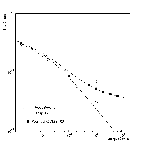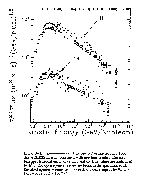This website is kept for archival purposes only and is no longer updated.
Galactic Cosmic RaysACCESS will detect galactic cosmic rays (GCRs) moving through space at close to the speed of light. Cosmic rays are one of only a few samples of matter that we have from outside our Solar System.
Up to this point the process releases energy. The formation of elements heavier than iron and nickel requires the input of energy. Supernova explosions result when the cores of massive stars have exhausted their fuel supplies and burned everything into iron and nickel. The nuclei with a mass heavier than nickel are thought to be formed during these explosions. All of the particles heavier than iron and nickel contribute less than .00001%, by number, of the cosmic rays and of the entire Universe! They are of great interest to the cosmic ray scientists. The cosmic rays created during nucleosynthesis and accelerated (we think) during supernova explosions are called primary cosmic rays. Secondary cosmic rays are created when the primary cosmic rays collide with particles and break apart into smaller elements. During a supernova, the particle is violently thrown from where it was formed out into the Milky Way, then it crosses the Galaxy many times. Helium (He+2) is an example of a primary cosmic ray; carbon (C+6) is another. Boron (B+5) is a secondary cosmic ray, created when a carbon cosmic ray smashes into some other particle, like an interstellar gas atom, and loses a proton.
The "Knee" A key science goal for ACCESS is to test supernova shock acceleration models at energies up to 1015 eV. This energy level is denoted by the "knee" in the chart (at left) at the change in the slope of the graph.
(The symbols near and above the "knee" are from ground-based measurements. The symbols at the lower energies are from the Soviet Proton series of satellites.)
Astrophysicists believe that this is the maximum particle energy level that a supernova explosion can produce. Cosmic rays with greater energies may originate from outside our galaxy, where phenomenon such as Active Galactic Nuclei (AGN) (read more about AGNs at http://imagine.gsfc.nasa.gov/docs/science/know_l1/active_galaxies.html) may accelerate particles with far greater force. We don't know for certain where these cosmic rays come from. With ACCESS's ability to collect and analyze a greater number of cosmic rays than ever before, we will be able to closely examine this "knee" area for each type of cosmic ray. Each element has a slightly different knee, and these differences allow us to learn much about the physics associated with supernova explosions and cosmic ray acceleration.
A key science goal for ACCESS is to test supernova shock acceleration models at energies up to 1015 eV. This energy level is denoted by the "knee" in the chart (at left) at the change in the slope of the graph.
(The symbols near and above the "knee" are from ground-based measurements. The symbols at the lower energies are from the Soviet Proton series of satellites.)
Astrophysicists believe that this is the maximum particle energy level that a supernova explosion can produce. Cosmic rays with greater energies may originate from outside our galaxy, where phenomenon such as Active Galactic Nuclei (AGN) (read more about AGNs at http://imagine.gsfc.nasa.gov/docs/science/know_l1/active_galaxies.html) may accelerate particles with far greater force. We don't know for certain where these cosmic rays come from. With ACCESS's ability to collect and analyze a greater number of cosmic rays than ever before, we will be able to closely examine this "knee" area for each type of cosmic ray. Each element has a slightly different knee, and these differences allow us to learn much about the physics associated with supernova explosions and cosmic ray acceleration.The total numbers of all types of cosmic ray particles previously measured by various experiments is shown in this graph on the right. ACCESS is designed to more specifically detect the different species of a large range of cosmic rays, both primary and secondary, from the single proton of hydrogen (H+1) to iron (Fe+26) and nickel (Ni+28).
What We Can Learn? Such a range can provide a great deal of information about the make-up of the surrounding Universe, as well as the processes needed to create and accelerate these elements through space. For example, the boron-carbon ratio can tell us how much matter (dust clouds, gas) the carbon cosmic ray has traveled through on its way toward Earth (see graph on right). A low number of carbon cosmic rays means that the carbon traveled through dense matter, smashing into particles along the way and creating more boron. More carbon at high energy (i.e., faster velocity) means that the carbon cosmic ray didn't encounter as much matter. Likewise, other properties of cosmic rays tell equally interesting histories (see graph on left).
Such a range can provide a great deal of information about the make-up of the surrounding Universe, as well as the processes needed to create and accelerate these elements through space. For example, the boron-carbon ratio can tell us how much matter (dust clouds, gas) the carbon cosmic ray has traveled through on its way toward Earth (see graph on right). A low number of carbon cosmic rays means that the carbon traveled through dense matter, smashing into particles along the way and creating more boron. More carbon at high energy (i.e., faster velocity) means that the carbon cosmic ray didn't encounter as much matter. Likewise, other properties of cosmic rays tell equally interesting histories (see graph on left).

To capture a wide variety of cosmic rays, the ACCESS instrument is equipped with two detectors, each utilizing a different technique that capitalizes on the unique properties of a particular group of cosmic rays. For example, some cosmic rays are more common than others; some are faster and more energetic.
|